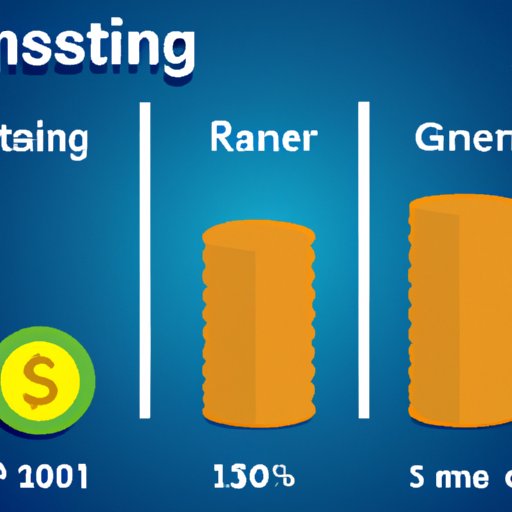Introduction
One of the most crucial aspects of running a successful business is understanding how to maximize profit. In order to do so, business owners need to analyze their revenue streams and identify areas for growth. One way to achieve this is through the use of marginal revenue analysis. Marginal revenue is an essential metric in business decision-making that reflects the revenue earned from each additional unit of output sold. In this article, we will explore everything you need to know about marginal revenue, its calculations, and how to use it to optimize your business strategy.
A Beginner’s Guide to Finding Marginal Revenue: Understanding the Basics and Calculations
Marginal revenue is the increase in revenue resulting from the sale of one more unit of output. It is important to note that this contrasts with total revenue, which is the total amount of revenue earned from the sales of all units of output at a given price.
The formula used to calculate marginal revenue is:
MR = ΔTR/ΔQ
Where: MR = Marginal Revenue, ΔTR = Change in Total Revenue, and ΔQ = Change in Quantity Sold.
Let us use an example scenario to illustrate how to find marginal revenue. If a company sells ten units of product A for $10 each, their total revenue would be $100. If the same company sells eleven units of product A for $10 each, their new total revenue would be $110. To calculate marginal revenue, we can use the formula:
MR = (110-100)/(11-10) = $10
Maximizing Profit: How to Utilize Marginal Revenue to Optimize Your Business Strategy
Marginal revenue is a powerful tool for businesses to determine their optimal output level. At a certain point, the cost of producing an additional unit may exceed the additional revenue generated from selling that unit. By calculating marginal revenue, businesses can identify the point where their marginal cost and marginal revenue intersect, known as the profit-maximizing quantity.
Additionally, marginal revenue can help a business identify which products or services are the most profitable. By comparing the marginal revenue of various products or services, a business can focus on those that generate the most revenue and allocate resources accordingly. Marginal revenue can also provide insights into pricing and marketing strategies. For example, if a company notices a decline in marginal revenue, they may need to adjust pricing or marketing efforts to increase demand for their product or service.
Crunching the Numbers: Step-by-Step Guide on How to Find Marginal Revenue
When calculating marginal revenue, it is important to keep in mind the formula we discussed earlier: MR = ΔTR/ΔQ. To break it down even further, here is a step-by-step guide:
- Determine the initial total revenue earned from a specific quantity of output sold
- Increase the quantity of output sold by one
- Calculate the new total revenue generated from the increased quantity sold
- Determine the change in total revenue from steps 1 and 3
- Determine the change in the quantity sold from steps 1 and 2
- Divide the change in total revenue by the change in quantity sold to find the marginal revenue
Marginal revenue analysis can be beneficial in common scenarios such as pricing changes, expanding or reducing production, or launching a new product or service. By performing marginal revenue analysis in these situations, a business can make informed decisions about their operations and optimize revenue streams.
The Importance of Marginal Revenue in Decision Making: Identifying Areas for Growth in Your Business
One of the most significant benefits of marginal revenue analysis is how it can identify areas for growth in a business. By analyzing the marginal revenue of various products and services, a business can recognize which products or services have the most potential for growth and allocate resources accordingly.
Marginal revenue analysis is also helpful in evaluating the impact of new investments on revenue. By calculating the marginal revenue of a new investment, a business can determine whether it is worth pursuing and how it may affect their current revenue streams. Lastly, businesses can use marginal revenue to identify and address declining trends in their revenue streams. By taking action on these insights, businesses can stay competitive and achieve their financial goals.
Avoiding Common Mistakes When Calculating Marginal Revenue: Tips and Tricks for Accurate Results
There are several common mistakes businesses may make when computing marginal revenue. These include:
- Incorrectly calculating total revenue
- Miscalculating quantity sold
- Incorrectly calculating the change in total revenue and quantity sold
- Using irrelevant or inaccurate data
To avoid these pitfalls, businesses should ensure they gather and analyze accurate data, double-check their calculations, and seek professional help if necessary.
Conclusion
Marginal revenue analysis is a vital tool for businesses to optimize their revenue streams and make informed decisions about their operations. By understanding the basics of marginal revenue, utilizing its calculations, and using its insights to identify growth opportunities, businesses can stay competitive, achieve their financial goals, and maximize their profits.
Remember to avoid common mistakes and always analyze your data accurately. Implementing marginal revenue analysis can be a game-changer for your business strategy.
